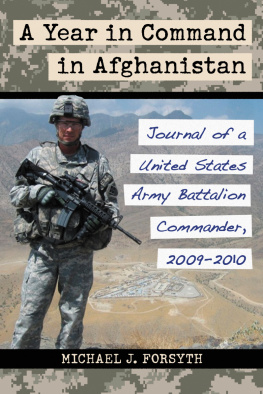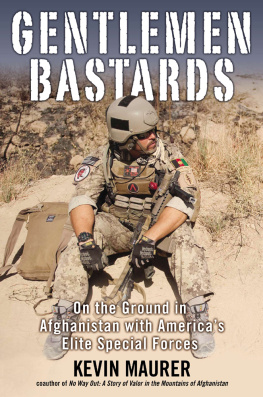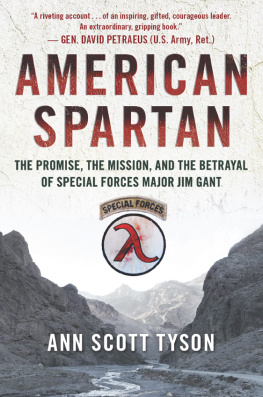
This edition is published by PICKLE PARTNERS PUBLISHINGwww.picklepartnerspublishing.com
To join our mailing list for new titles or for issues with our books picklepublishing@gmail.com
Or on Facebook
Text originally published in 2004 under the same title.
Pickle Partners Publishing 2015, all rights reserved. No part of this publication may be reproduced, stored in a retrieval system or transmitted by any means, electrical, mechanical or otherwise without the written permission of the copyright holder.
Publishers Note
Although in most cases we have retained the Authors original spelling and grammar to authentically reproduce the work of the Author and the original intent of such material, some additional notes and clarifications have been added for the modern readers benefit.
We have also made every effort to include all maps and illustrations of the original edition the limitations of formatting do not allow of including larger maps, we will upload as many of these maps as possible.
SPECIAL FORCES COMMAND AND CONTROL IN AFGHANISTAN
by
Richard G. Rhyne
TABLE OF CONTENTS
Contents
TABLE OF CONTENTS
REQUEST FROM THE PUBLISHER
ABSTRACT
The purpose of this study is to examine the nature of the command and control relationship between Special Forces and conventional forces. Operation Enduring Freedom in Afghanistan serves as a case study in practice and doctrinal application. Against the backdrop of World War II, Operations in Panama, Haiti, Somalia, Bosnia, and Operations Desert Shield and Desert Storm, this thesis provides an analysis of the complex issues arising from the necessity to fight jointly.
ACKNOWLEDGMENTS
I wish to thank my committee for their invaluable assistance and support. I especially want to thank LTG Dan McNeill and COL Joseph Celeski whose efforts and success of command was a direct result on their ability to successfully integrate Special Forces and conventional forces. Their assistance through their interviews provided the basis for this thesis. Finally, I want to thank Ms. Helen Davis for her enthusiastic support that she provides to all the students participating in the Master of Military Art and Science Program.
ACRONYMS
ACOM = Atlantic Command
ADCON = Administrative Control
C2 = Command and Control
CENTCOM = Central Command
CFLCC = Coalition Forces Land Component Command
CFLCC-FWD = Coalition Forces Land Component Command Forward
CFSOCC = Combined Forces Special Operations Component Command
CGSC = Command and General Staff College
COCOM = Combatant Command
DIRLAUTH = Direct Liaison Authorized
JSOTF = Joint Special Operations Task Force
JTF = Joint Task Force
MTT = Mobile Training Team
OPCON = Operational Control
SF = Special Forces
SOCOM = Special Operations Command
TACON = Tactical Control
TF = Task Force
TSOC = Theater Special Operations Command
TTP = Tactics, Techniques, and Procedures
UNOSOM = United Nations Operations Somalia
ILLUSTRATIONS
Figure 1. Operation Enduring Freedom C2 prior to March 2002
Figure 2. C2 after March 2002
CHAPTER 1INTRODUCTION
The dogmas of the quiet past are inadequate to the stormy present. The occasion is piled high with difficulty, and we must rise with the occasion. As our case is new, so we must think anew, and act anew. We must disenthrall ourselves, and then we shall save our country.Abraham Lincoln
From the very beginning of Special Forces-type missions, there has been an overarching problem with command and control (C2) as a function of integration with conventional forces. Special Forces are considered unconventional in tactics, techniques, and procedures. After 1986, joint publications (JPs) provided the strategic, operational, and tactical guidance for future campaigns including guidance for integration. However, the terrorist attacks on 11 September 2001 ushered in an era of warfare that continues to challenge conventional wisdom about integration and C2 relationships.
The Research Question
Using the operational situation in Afghanistan, what is the optimal C2 relationship between Army Special Forces and conventional forces?
Subordinate Questions
1. Why is C2 so important?
2. What has been the historical precedent for C2 of Special Forces?
3. What is the joint doctrine for C2 of Special Forces?
4. How was doctrine implemented in Operation Enduring Freedom?
5. Did the C2 of Special Forces in Afghanistan work?
6. How does a C2 relationship effect integration of Special Forces and conventional forces?
7. What change if any should be considered in joint doctrine?
Limitations
1. This thesis does not use any classified documents. The term special operation forces, denotes special operation forces not included under the highest categories of classification. The units that are conducting operations that are top secret mission are called Tier 1 forces. Special operation forces have the ability to work in a full spectrum of classified and non-classified environments. The units in this study fall under the heading of tier 3 forces. No reference occurs to units under the Joint Special Operations Command in Afghanistan.
2. The majority of the information of C2 in Afghanistan constitutes very recent raw data. In June 2002, Joint Task Force-180 had the full control of all operations in Afghanistan. Materials on Operation Enduring Freedom do not benefit from the kind of perspective that comes with time.
3. Interviews have their own advantages and disadvantages. To reduce bias this study relies on multiple interviews for purposes of cross-checking. This study uses interviews to point out how doctrine was interpreted to dictate the C2 relationships that exist today in Afghanistan. Materials for analysis include interviews with commanders or personnel who were in staff positions in the Joint Special Operation Task Force and Joint Task Force in Afghanistan.
4. The information in this thesis focuses on Army Special Forces in Afghanistan.
5. Historical precedent informs much of the comparison and analysis, but fuller examination of the precedent lies outside the parameters of this thesis.
Authors Qualification
The author of this thesis was introduced to special operations in 1992. Upon completion of the Special Forces qualification course, and after serving as a detachment commander, the author was tasked in 1996 to support the Battle Command Training Program (BCTP) at Fort Bragg, North Carolina, supporting GEN Henry Shelton, the XVIII Airborne Corps Commander. The author was designated as the special operations C2 cell for the XVIII Airborne Corps BCTP.
In 2000, the author commanded Bravo Company 1st Battalion 3rd Special Forces Group (Airborne), and was selected to take his company to Bosnia under the 3rd Infantry Division (3ID) Commander MG Walter Sharp. MAJ Rhyne commanded six Special Forces teams under the guidance of Joint Special Operation Task Force (JSOTF) in Sarajevo. He provided the C2 and the coordination efforts as the special operation C2 cell (SOCCE). The Special Forces teams were Administrative Control (ADCON) to the SOCCE and OPCON to the JSOTF. Under the SOCCEs leadership, the operational detachments conducted operations as Joint Commissioned Observers. Operational detachments that conducted direct action missions were placed TACON to the SOCCE. The author was present for all meetings by the JTF, JSOTF, and SFOR commanders discussions on C2 relationships of Special Forces in theater.










